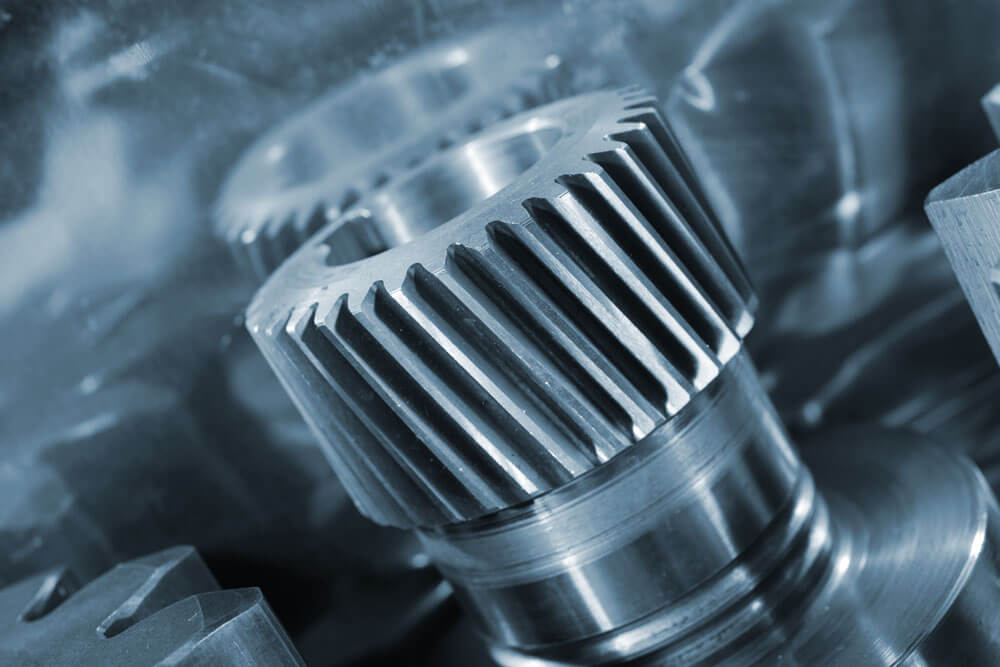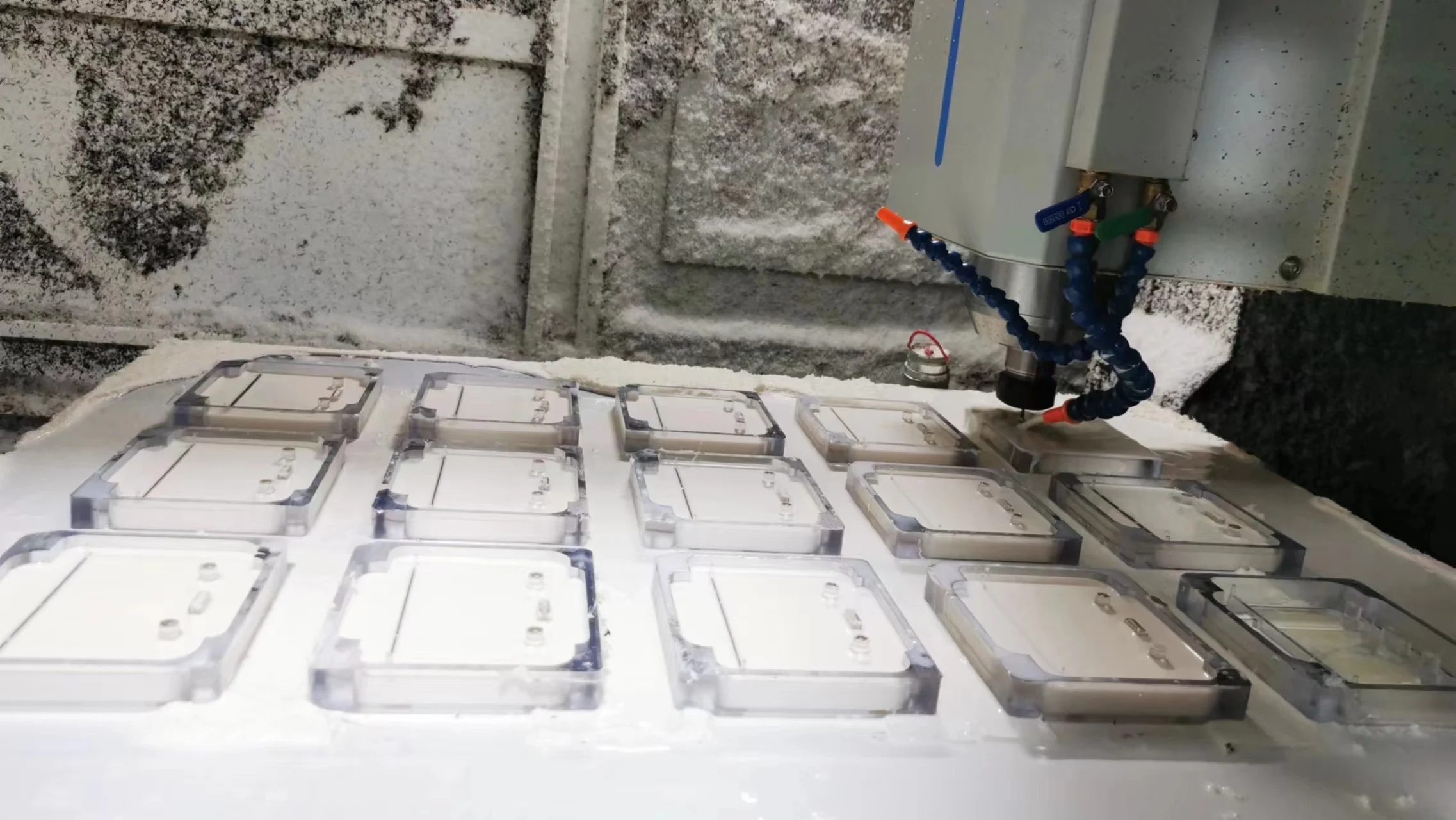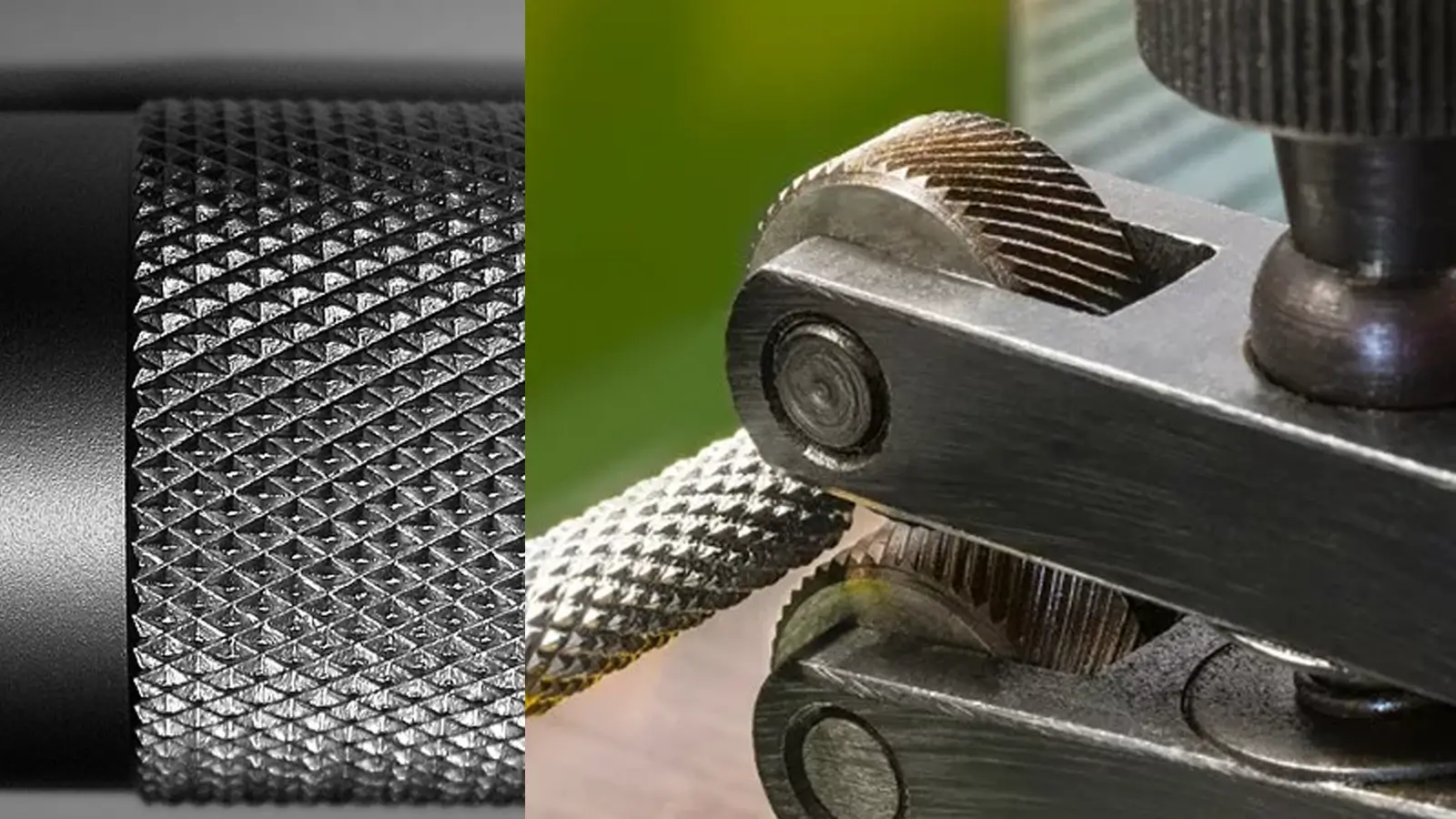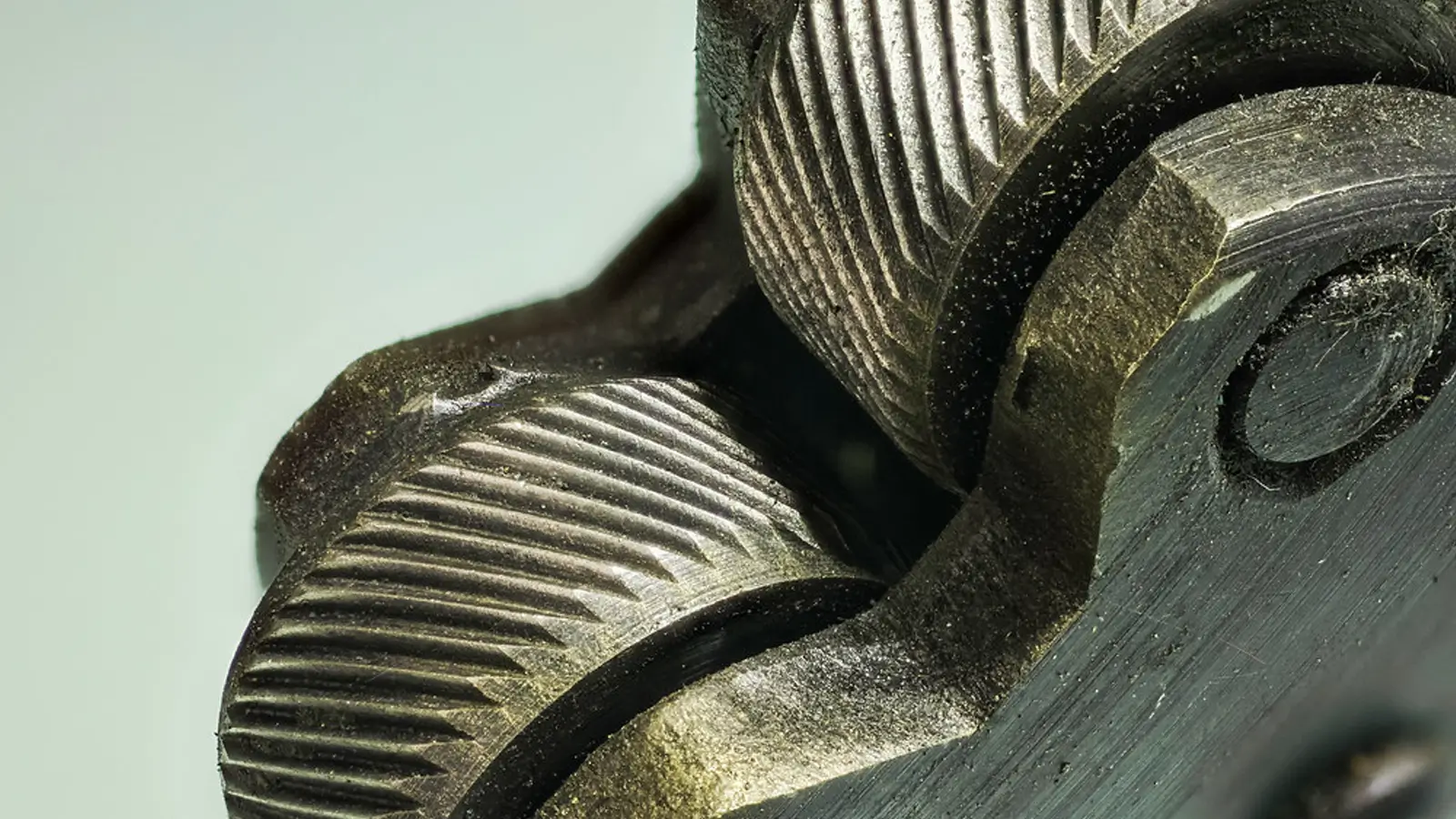Table of Contents
Both zinc plating and nickel plating are popular finishing method for metals. They can significantly improve corrosion resistance, abrasion performance, appearance, and certain functions of substrates. But zinc plating and nickel plating are different with respect to coating feature, application, and cost etc.
This article will provide a complete guide of comparison between zinc plating and nickel plating as well as how to choose between them.
Key Takeaways:
- Zinc plating and nickel plating are both widely used finishing methods that enhance corrosion resistance, durability, and appearance of metal parts, but they serve different needs.
- Zinc plating is cost-effective, environmentally friendlier, and offers sacrificial protection, making it ideal for general corrosion resistance in atmospheric conditions.
- Nickel plating provides superior hardness, wear resistance, conductivity, and a decorative finish, making it suitable for demanding applications and high-end aesthetics.
- The choice between the two depends on the application requirements—whether cost-efficiency and basic protection (zinc) or durability, performance, and appearance (nickel) are the priority.
1. What is Zinc Plating?
To know about the comparison of zinc plating and nickel plating, it is required to learn about zinc plating itself first.
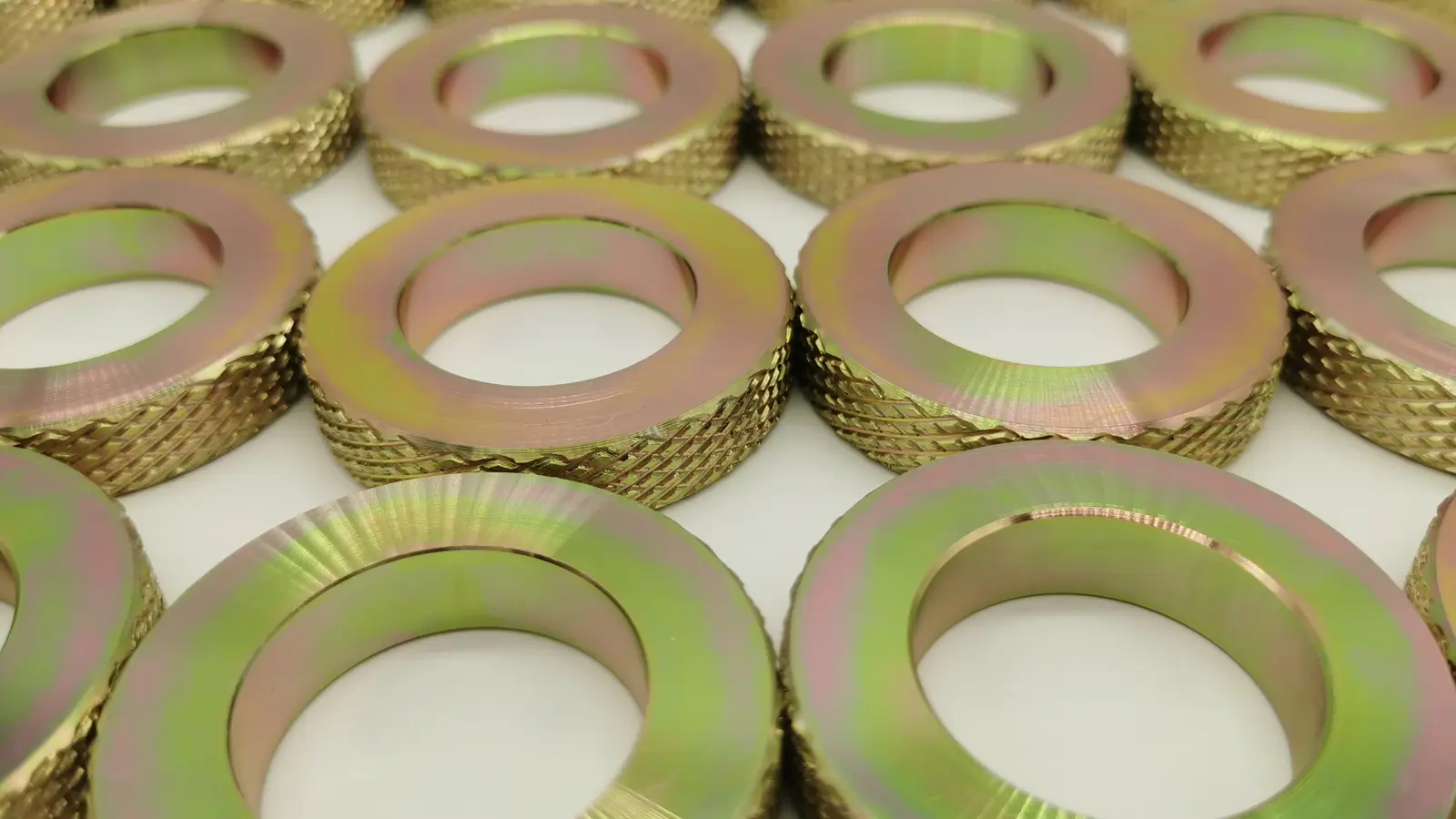
Zinc plating is a finishing technology to coat a thin zinc layer on metals, especially steel and iron, for better corrosion resistance and durability.
Common plating methods include hot-dip galvanizing, electro zinc plating, mechanical zinc plating, and electroless zinc plating.

The main steps of zinc plating process are as follows:
- Pro-process: Before plating the zinc coating on the substrate, it is required to fully cleaning the part surface from oils, grease, oxides, andscale first. And it is critical to do the pro-process well for uniform adhesion and coating integrity Typical methods include degreasing, pickling, alkaline cleaning, and abrasive blasting. Choice depends on plated material and level of contamination.
- Activation: The second step is to activate the part by immersing it into an acid bath. Proper activation can validly remove remainingoxides from the surface and enhance the receptiveness of the part to zinc ions during the plating process.
- Plating: For hot-dip galvanizing, immerse the part into the zinc bath at 440-460℃. For electro zinc plating, submerge the part in an electrolyte solutionwith zinc salts and apply a direct current to trigger the electrolytic reaction. For mechanical zinc plating, compound glass beads, zinc power, and additives into impacting system and put them into a barrel with the part for zinc deposition. For electroless zinc plating, formulate proper zinc plating bath and immerse the part in it for zinc coating deposition.
- Post-process: This step is mainly to passivate the part for better corrosion resistanceand specific final appearance, by forming a thin chromate conversion coating over the zinc plating. And the final appearances are usually clear blue, yellow, black, and olive drab. Different finish means different level of corrosion resistance and aesthetic
- Rinsing and Drying: The final step is to rinse the part totally from any residual chemicals andthen dry it.
A complete blog about Zinc Plating: Zinc Plating – Everything You Shall Know
2. What is Nickel Plating?
Nickel plating is also a kind of metal finishing technology. During the nickel plating process, a nickel coating would form on the part surface to protect the part from corrosion and friction, and to provide the part with decorative appeal.
And electroplating and electroless plating are two key methods for nickel plating. Below shows the main steps for nickel plating:
- Pro-process: Same as the process of zinc plating, that of nickel plating alsobegins with cleaning the part surface thoroughly. It is required to remove oils, rust, scale, oxides and any other impurity by degreasing, pickling, or abrasive treatment. With the surface fully cleaned up, it can then accept nickel plating richly and uniformly. While incomplete cleaning would cause poor adhesion during the later plating.
- Activation: This is the second step for nickel plating. Activation is to furthereliminate the remaining oxide films on the surface and offer it better condition for later plating. It can effectively help the nickel deposit more uniform, especially important for the parts with complex geometries or varying material hardness. And mild acid and alkaline solution are commonly used to activate the metal part.
- Plating: Just as it is mentioned above, there are two main methods for nickel plating. For the electrolytic nickel plaiting, the part would be connected with a direct current as it is submerged in a nickel salt electrolyte, during which the part serves as the cathode and a nickel anode is used to replenish metal ions in the solution. For electroless nickel plating, chemical reduction reaction is fully applied to deposit a nickelcoating on the part, with no need of electrical current. More importantly, compared with electroplating, electroless nickel plating can form a nickel coating more uniformly, meaning that even blind holes, internal surfaces, or threads would also be covered with uniform nickel coating.
- Brightening(Optional): Finishes of the final nickel plating can be adjusted due to different brightening agents. Brightening agents can be added to the plating bath to control the gloss and smoothness of the final nickelcoating. Usually, a reflective and mirror-like finish would be formed for decoration. While matte or satin appeals can also be produced through adjusting bath composition.
Post-process: The post-process usually covers passivation, rinsing and drying process. The nickel plating can be passivated by chromate solution for stronger corrosion resistance. And then it is required to rinse the part completely to remove chemical residues and avoid spotting. While in some cases, heat treatment or anti-tarnish sealing can be applied to the nickelcoating respectively for better hardness and lasting desired appeal. Then the process ends up with drying.
Learn more: What is Nickel Plating?
3. What should be Noticed during Electroplating Process of Zinc vs Nickel Plating?
As it is mentioned above, both zinc and nickel coatings can be plated through electroplating technology. But since zinc plating mainly fucoses on corrosion resistance while nickel plating is primarily used for decoration and abrasion resistance, their parameters should be differently controlled during the electroplating process.
Key Parameters of Electrolytic Zinc Plating
- Electrolyte Type: Electrolytic zinc plating is commonly divided into acid and alkaline zinc.
- Main Salt Concentration: For acid zinc plating, the main salt is usually zinc chloride with concentration of 60-180g/L. A higher concentration leads to a faster deposition rate but coarser coatings. For alkaline zinc plating, the main salt is usually zincoxide with concentration of 8-12g/L. The concentration is low and must match the complexing agent, otherwise precipitation is prone to occur.
- Complexing Agent/Buffer: For alkaline zinc plating, it is a core parameter. Sodium hydroxide with concentration of 80-120g/L would commonly serve as both complexing agent and conductive salt. And the ratio of Zn²⁺to OH⁻ must be strictly controlled to avoid the formation of zinc hydroxide precipitates. For acid zinc plating, no strong complexing agent is required. Only a small amount of brighteners is needed.
- Additives: Acid zinc plating focuses on brighteners and levelers to control coating gloss, while alkaline zinc plating focuses on throwing power agents to ensue uniformcoatings on complex parts.
- Current Density: The range is wide, with 1-10A/dm² for acid zinc plating and 0.5-5A/dm² for alkaline zinc plating. And the zinc coating has low sensitivity to current density. If thick coating is needed, high current can cause fast deposition. While if the part is complex, low current can avoid edge burning.
- Electrolyte Temperature: Usually 15-40℃ for acid plating and 20-50℃ for alkaline plating. Temperature fluctuations have little impact on the coating. And under low temperature condition, low solubility of additives may cause gloss lost. While under hightemperature condition, it is only required to notice water evaporation and main salt supplement.
- pH Level: Usually pH 3-6 for acid zinc plating and pH 12-14 for alkaline zinc plating. And the later shouldprevent pH drop caused by CO₂ absorption. Small level of fluctuation is allowed.
- Stirring Method: Air stirring or mechanicalstirring is enough.
Key Parameters of Electrolytic Nickel Plating
- Electrolyte Type: Usually acid sulfate system for Watts zinc plating. Sulfamate zinc plating is common too.
- Main Salt Concentration: The main salt is nickel sulfate. And a higher concentration allows a higher current, with a denser coating as a result. Conversely, coating burning is likely to occur.
- Complexing Agent/Buffer: Boric acid is the core parameter of nickel plating process. The concentration is usually 30-45g/L. It is used to buffer the pH level of the electrolyte and refine grains. Sudden local pH increasing might cause production of nickelhydroxide while insufficient concentration would cause the coating gray and develop pinholes.
- Additives: Brighteners are applied to make the coating mirror-like. But excessivebrighteners would lead to coating brittleness. In addition, purifying agents should be added to clean impurities away since even trace amounts of impurities can cause the coating black.
- Current Density: The density is usually 1-5A/dm². And nickel plating has extremely high sensitivity to current density. Density below 1 A/dm² would slow deposition and dull coating. While that above 5A/dm² would causelocal current concentration and then coating burning. It is necessary to strictly keep the current distribution uniformly with the help of stirring.
- Electrolyte Temperature: The temperature must remain medium(45-60℃) and stable. If the temperature is below 45℃, the boric acid solubility would decrease, leading to failure of pH buffering and developmentof coating pinholes. While if the temperature is above 60℃, decomposition of brighteners would lead to coating dullness and sharp increase in energy consumption.
- pH Level: The pH should be strictly controlled within 3.8-4.5. If the pH is below 3.8, hydrogen evolution would intensify and then more coating pinholes and poor adhesion would appear. If the pH level is above 4.5, Ni²⁺tends to form nickel hydroxide precipitates, making the coating mixed with impurities and covered by white spots.
- Stirring Method: Efficient stirringcombined with compressed air stirring and cathode movement is must for nickel plating. It is to avoid Ni²⁺ depletion on the cathode surface and promote hydrogen escape. Insufficient stirring will directly lead to rough coating and loss of gloss.
Table of Core Parameter Comparison between Zinc Plating and Nickel Plating
| Parameter | Zinc Plating | Nickel Plating |
|---|---|---|
| pH Level | Acid: 3-6 Alkaline: 12-14 | 3.8-4.5 |
| Temperature | 15-50°C | 45-65°C |
| Current Density | Acid: 1-10 A/dm² Alkaline: 0.5-5 A/dm² | 1-5 A/dm² |
| Key Additives | Brighteners, Leveling Agents | Brighteners, Leveling Agents, Wetting Agents |
| Sensitivity to Impurities | Moderate | Extreme |
| Buffer Agent | No special requirements | Boric Acid |
| Special Requirements | Uniform Thickness | Low Porosity, Controlled Internal Stress, Multi-layer Plating |
Typical Issues and Associated Parameters
| Issues | Parameters for Zinc Plating | Parameters for Nickel Plating |
|---|---|---|
| Dull / Non-bright Coating | Insufficient additives, pH deviation, excessive current density | Brightener imbalance, low temperature, organic contamination |
| Poor Adhesion | Poor pretreatment, metallic impurities in bath | Inadequate degreasing, improper current initiation, high internal stress |
| Pitting / Pinholes | Insufficient wetting agent, oil contamination, inadequate agitation | Insufficient wetting agent, organic impurities, poor agitation |
| Blistering / Peeling | Hydrogen embrittlement (acid zinc), inadequate rinsing before passivation | Inadequate de-embrittlement baking, unrelieved substrate stress |
| Brittle / Cracked Coating | Rarely observed | High internal stress (low temperature, high pH, improper additives) |
4. Pros and Cons of Zinc Plating VS Nickel Plating
As zinc plating and nickel plating are both metal finishing technology to protect parts from corrosion and wear, there are many similar strengths between them. But they still have their specific advantages and their disadvantages are much different.
4.1. Pros and Cons of Zinc Plating
Pros:
- Excellent corrosion resistance, especially in outdoor and high-humidity conditions
- Much lower cost than other plating options
- Relatively soft and ductile
- Easy to recycle and environmentfriendly
Cons:
- Higher risk of hydrogen embrittlement
Not ideal for parts with frequent friction
4.2. Pros and Cons of Nickel Plating
Pros:
- Excellent corrosion resistance in harsh conditions
- Excellent abrasion resistance
- Attractive and bright finish
- High conductivity
- Good temperature resistance
Cons:
- Higher cost
- Risk of allergy
5. Top 8 Differences between Zinc Plating and Nickel Plating?
- On Protective Mechanism: Compared with nickel plating, zinc plating provides not only physical isolation, but also sacrificialanode protection, meaning that the zinc plating itself would be corroded first and even when the coating starts to wear off, it continues to protect the base material. While as for nickel plating, when the nickel coating is broken, the corrosion on the base material would be worse.
- On Corrosion Resistance: The corrosion resistance of zinc plating vs nickel plating is different in different conditions. Zinc plating has good corrosionresistance in neutral or weakly acidic environment such as atmosphere and fresh water. But it would be corroded much easier in strong acid and alkali, or high-slat conditions. Compared with zinc plating, nickel plating has better corrosion resistance than zinc plating in various conditions. But note that nickel plating is sensitive to chloride ions and once the coating is broken, the corrosion would be intensified.
- On Hardness and Abrasion Resistance: Nickel plating has much better hardness and abrasion resistance than zinc plating. The hardness of common zinc plating is about HV 90 –120 while that of nickel plating is about HV 150-600, and can be up to 1000 after heat treatment.
- On Finishing Appearance: Zinc plating is commonly silver or pale blue. After passivation, zinc plating can show various color like yellow, colored and black, but it has relatively poor fineness. Nickel plating is usually silver or pale white with bright luster. Its textureis better than zinc plating. Therefore, nickel plating is preferred for ornamental parts.
- On Electrical Conductivity: Nickel plating has better electrical conductivity than zinc plating. The surface of nickel coating is denser than that of zinc coating and with lower electrical resistance meanwhile.
- On Solderability: Nickel plating has much better than solderability than zinc plating, especiallyfor electronic parts. The reason is that zinc is extremely easier to be oxidized and its temperature resistance is worse, making it less stable under heat.
- On Environmental Friendliness: In common condition, zinc plating is more environmentally friendly than nickel plating. The nickel itself is a type of pollutant and the wastewater produced duringnickel plating would extremely damage the environment. What’s more, the consumption for nickel plating is also higher than that for zinc plating.
On Cost: The cost of zinc plating is usually much lower than that of nickel plating. The cost usually convers raw materials, plating process, and environmentallyfriendly disposal of remains. Zinc plating is cheaper in all these aspects.
| Comparison | Zinc Plating | Nickel Plating |
|---|---|---|
| Protection Mechanism | Sacrificial anode protection | Barrier protection |
| Corrosion Resistance | Moderate, suitable for general atmospheric environments | Excellent, superior resistance to acids, alkalis, and salt spray |
| Hardness / Wear Resistance | Worse | Excellent |
| Appearance | Silvery-white, grayish, or colorful after passivation | Bright silvery finish, highly decorative |
| Electrical Conductivity | Average | Excellent |
| Solderability | Poor | Good |
| Temperature Resistance | Moderate | Excellent |
| Environmental Friendliness | Relatively eco-friendly | Heavy metal |
| Cost | Relatively low | High |
| Thickness | 5-20μm | For decoration: 3-10μm For function: 10-50μm |
6. How to Choose between Zinc Plating and Nickel Plating?
Based on the above introduction, it is known that there are various differences between zinc plating and nickel plating. It is required to consider both actual applying requirements and their own features when choosing between them.
6.1. When to Choose Zinc Plating
- When the parts are exposed in moderately corrosive conditions
- When the parts are not to be violently worn
- When the budget is limited
- When the environmentallyfriendliness is primarily considered
- When the parts are in mass production
6.2. When to Choose Nickel Plating
- When the parts are to be in long-term corrosive conditions
- When the parts are to be exposed in harsh conditions such as tightfriction, strong acid and alkaline, as well as extreme heat
- When the finishing appearances are important
- When the electrical conductivity matters
- When the parts are sophisticated
7. Conclusion
In applications, zinc plating is preferred for basic corrosion proof, cost-effectiveness, and mass production while nickel plating is usually chosen for the excellent corrosion and wear resistance as well as good appeals. It is critical to know the distinctions of zinc plating and nickel plating well before applying them on parts.
8. Frequently Asked Questions about Zinc Plating vs. Nickel Plating
8.1. Which offers more color options?
Zinc plating often has more colors, e.g., iridescent, blue-white, yellow, black than Nickel plating.
8.2. My product will be subject to frequent friction or contact. Which one should I choose?
Nickel plating. It has higher hardness and significantly better wear resistance than zinc plating.
8.3. Which electroplating process is more cost-effective?
Zinc plating. Its cost is typically lower than nickel plating.
8.4. Which plating is better for outdoor or high-humidity applications?
Zinc plating is cost-effective and works well in outdoor or moderately humid environments. For harsh conditions or long-term exposure, nickel plating provides better corrosion protection.
8.5. What is the main difference between zinc plating and nickel plating for my parts?
Zinc plating mainly protects parts through sacrificial anode protection and is suitable for general corrosion resistance. Nickel plating forms a dense barrier coating, offering superior corrosion resistance, wear resistance, and decorative appeal.
8.6. My part will experience a lot of wear and tear, friction, or high temperatures. Which plating holds up better?
For wear resistance and durability under load, nickel plating is significantly harder than zinc. Nickel provides a much tougher surface that is more resistant to abrasion, galling, and constant handling. It also maintains its properties better at higher temperatures. Zinc is a softer coating and can wear away more quickly in high-friction applications.
8.7. I need a non-reflective, matte finish for a military or tactical application. Which is better?
Zinc plating with an olive drab (OD) or black chromate finish is the standard for military specifications. It provides excellent corrosion protection while eliminating light reflection (glare), which is crucial for tactical equipment. Nickel’s naturally bright and reflective finish makes it unsuitable for these applications.
8.8. Can I plate both zinc and nickel onto any type of metal?
Both zinc and nickel plating are most commonly applied to ferrous metals (steel and iron). While it is possible to plate them onto other metals like copper or brass, it is less common and may require different pre-treatment processes. Steel is the most typical and suitable substrate for both plating types.

Lucas is a technical writer at ECOREPRAP. He has eight years of CNC programming and operating experience, including five-axis programming. He’s a lifelong learner who loves sharing his expertise.

What is Nickel Plating?
Nickel plating is a finishing process that coats a thin layer of nickel onto a part using electroplating or chemical methods, improving a part’s corrosion resistance, wear resistance, and appearance.

Zinc Plating - Everything You Shall Know
Zinc plating is a kind of surface finishing method for metal part protection, provides a barrier to prevent the surfaces from being directly exposed to moisture and oxygen.

What is Black Oxide Coating?
Black oxide, also known as Black Oxide or Blackening, is a surface finishing process that forms a dense black oxide coating on the surface of metals through a chemical reaction.

Phosphating Coating Guide
Phosphate conversion coating, also known as phosphating, is a surface treatment process that forms an insoluble phosphate protective film on the metal surface through a chemical conversion reaction.
